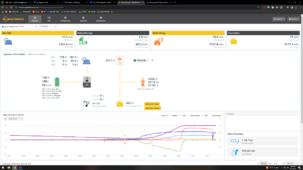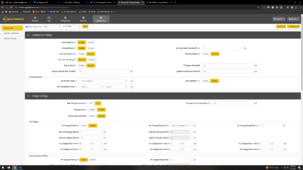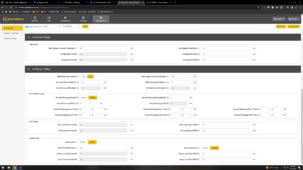Other threads have talked about the fact that in on grade mode when trying to do net zero, it’s really hard to control for large loads dropping off suddenly.
How does the 18 Kpv deal with large loads dropping off (or starting up) suddenly while in offgrid mode?
The issue here is how the control system operates for each mode.
In on grid mode with net zero export, the system is pumping energy into the local load and monitoring the CTs to prevent export. The CTs are slow devices, you basically have to measure a half or even full cycle to know the current, more or less. This can be some number of milliseconds. That makes the control response from load drop take a while in electrical terms. So the unit pumps out a bit more energy in that moment until the control system catches up. When a new load appears, the problem isn't as big a deal since the grid will pick up the load momentarily and then the control system will catch up and produce more output, so the critical test is load drop. You simply can't make the inverter respond fast enough to the CT response during load drop to have perfect zero export.
In off grid mode, the inverter is the only source of power and it can measure the output voltage instantly. The inverter simply drives the circuits to reach the desired voltage curve. If a load appears, this will take more current, but it can respond in a few microseconds to get the voltage on curve. Load drop or appearance is handled fairly swiftly. This is called transient response and is a factor in all power supply designs, even tiny low power ones like in a cell phone.
Inverter design is not unlike class D audio amps which are basically bidirectional switching regulators. These audio amps can precisely create a 20 KHz waveform with music fidelity, so precisely creating a 60 Hz waveform is not very difficult. You could, in theory, take the basic inverter circuit and make it into a multi KW audio amplifier. 240 VAC into an 8 ohm speaker is 7.2 KW. A rock concert uses a lot more power than that!
The above is not specific to the EG4 18KPV, but describes any inverter with net zero export capability, which is the ability to servo the power generation to the load while remaining attached to the grid.
Mike C.





